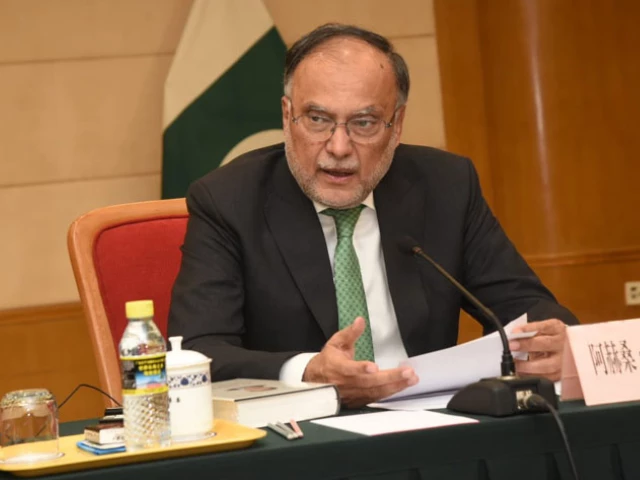Business
Home Depot stock rises 4% as retailer maintains full-year forecast

General view of a Home Depot store in Midtown Manhattan on February 26, 2025 in New York City.
Eduardo Munoz Alvarez | Corbis News | Getty Images
Home Depot stuck by its full-year outlook on Tuesday, even as the company came in slightly shy of Wall Street’s expectations for quarterly earnings and revenue.
The home improvement retailer reiterated that it expects full-year total sales to grow by 2.8% and comparable sales, which take out the impact of one-time factors like store openings and calendar differences, to rise about 1%.
However, it missed Wall Street’s earnings expectations for the second straight quarter.
Shares of Home Depot rose about 4% in early trading.
Here’s what Home Depot reported for the fiscal second quarter compared with Wall Street’s estimates, according to a survey of analysts by LSEG:
- Earnings per share: $4.68 adjusted vs. $4.71 expected
- Revenue: $45.28 billion vs. $45.36 billion expected
In the three-month period that ended Aug. 3, Home Depot’s net income was $4.55 billion, or $4.58 per share, down slightly from $4.56 billion, or $4.60 per share, in the year-ago period. Revenue rose almost 5% from $43.18 billion in the year-ago period. Adjusting for one-time items, including related to the value of intangible assets, Home Depot reported earnings of $4.68 per share.
The report is Home Depot’s first since May 2014 to fall short on both earnings and revenue expectations.
Home Depot’s results reflect that the company is still waiting for a greater pickup in home improvement activity, whether spurred on by higher housing turnover, lower mortgage rates or consumers’ own shift in mentality.
In an interview with CNBC, Chief Financial Officer Richard McPhail said the company continues to see the effects of a “deferral mindset” from homeowners, which began in roughly mid-2023.
Still, McPhail said, there are encouraging signs in the retailer’s business: Big-ticket transactions, which the company defines as over $1,000, rose 2.6% compared with the year-ago quarter. Twelve of its 16 merchandising departments posted year-over-year sales gains. And year-over-year sales trends improved in each month of the quarter, with comparable sales up 0.3% in May, 0.5% in June and 3.3% in July, he said.
“We absolutely saw momentum continue to build in our core categories throughout the quarter,” he said.
McPhail said Home Depot’s fiscal 2025 outlook does not factor in potential rate cuts by the Federal Reserve, which could spur borrowing for homebuying and bigger projects.
“We don’t embed any point of view on the rate environment changing, nor on the demand for large projects changing,” he said.
On the company’s earnings call, CEO Ted Decker said “some relief on mortgage rates, in particular, could help.” But he added that’s not the only factor on consumers’ minds when Home Depot surveys its customers and pros.
“The No. 1 reason for deferring the large project is general economic uncertainty,” he said. “That, you know, is larger than prices of projects, of labor availability, all the various things we’ve talked about in the past by a wide margin.”
Betting on the pros
As the real estate market remains sluggish and borrowing costs remain high, Home Depot has looked beyond the homeowners who come to its stores to buy kitchen appliances, cans of paint or other supplies for do-it-yourself projects. Home Depot acquired SRS Distribution, a company that sells supplies to roofing, landscaping and pool professionals, for $18.25 billion last year. It announced in June that it was buying GMS, a specialty building products distributor, for about $4.3 billion. The GMS deal is expected to close by the end of Home Depot’s fiscal year in late January, according to Home Depot.
McPhail said about 55% of Home Depot’s sales come from pros and about 45% comes from do-it-yourself customers, when including SRS.
Comparable sales increased 1% across the business and 1.4% in the U.S. during the fiscal second quarter. Home Depot said foreign exchange rates negatively impacted the company’s comparable sales by about 0.4%.
That comparable sales growth marks only the second quarter out of the last 11 that Home Depot has reported year-over-year improvement — marking its strongest performance in more than two years.
For the fiscal second quarter, McPhail said year-over-year sales on both the pro side and DIY side of the business grew. He declined to share percentage increases, but said those increases were “relatively in line with one another.”
Home Depot saw strength in categories that tend to be popular with pros, such as lumber, concrete and decking, said Billy Bastek, executive vice president of merchandising, on the company’s earnings call. On the do-it-yourself side of the business, seasonal products like grills and live goods from the gardening category did well, he said.
Online sales rose about 12% from the year-ago quarter, Bastek said. He attributed some of that to the company’s faster delivery speeds.
Tariffs have added uncertainty to the outlook for retailers, though. McPhail told CNBC in May that Home Depot did not plan to hike prices across its store, even as other retailers, including Walmart, warned that tariff-related costs would be too much to absorb.
Since May, however, U.S. tariff policies have changed. Higher tariffs began in early August on dozens of U.S. trading partners. Other major agreements remain in flux. President Donald Trump last week delayed higher U.S. tariffs on Chinese goods for another 90 days as negotiations continue.
McPhail told CNBC that Home Depot hasn’t changed its pricing approach. And, he said, most of its imported products sold in the quarter landed ahead of tariffs.
Home Depot’s customer base tends to be on stronger financial footing than U.S. consumers overall, which could help the company weather sustained higher costs. About 90% of its do-it-yourself customers own their own homes and the home pros who shop with Home Depot tend to get hired by homeowners.
Customer transactions across Home Depot’s website and stores fell in the quarter to 446.8 million compared with the 451 million in the year-ago period. Yet shoppers spent slightly more during those transactions, with the average ticket rising to $90.01 from an average ticket of $88.90 in the year-ago period. Those metrics exclude results from acquisitions SRS and HD Supply, the company said.
Home Depot’s shares ended Monday at $394.70. As of Monday’s close, the company’s shares are up roughly 1.5% so far this year. That trails the nearly 10% gain of the S&P 500 during the same period.
– CNBC’s Robert Hum contributed to this report.
Business
Stock Market Live Updates: Sensex, Nifty Hit Record Highs; Bank Nifty Climbs 60,000 For The First Time

Stock Market News Live Updates: Indian equity benchmarks opened with a strong gap-up on Monday, December 1, touching fresh record highs, buoyed by a sharp acceleration in Q2FY26 GDP growth to a six-quarter peak of 8.2%. Positive cues from Asian markets further lifted investor sentiment.
The BSE Sensex was trading at 85,994, up 288 points or 0.34%, after touching an all-time high of 86,159 in early deals. The Nifty 50 stood at 26,290, higher by 87 points or 0.33%, after scaling a record intraday high of 26,325.8.
Broader markets also saw gains, with the Midcap index rising 0.27% and the Smallcap index advancing 0.52%.
On the sectoral front, the Nifty Bank hit a historic milestone by crossing the 60,000 mark for the first time, gaining 0.4% to touch a fresh peak of 60,114.05.
Meanwhile, the Metal and PSU Bank indices climbed 0.8% each in early trade.
Global cues
Asia-Pacific markets were mostly lower on Monday as traders assessed fresh Chinese manufacturing data and increasingly priced in the likelihood of a US Federal Reserve rate cut later this month.
According to the CME FedWatch Tool, markets are now assigning an 87.4 per cent probability to a rate cut at the Fed’s December 10 meeting.
China’s factory activity unexpectedly slipped back into contraction in November, with the RatingDog China General Manufacturing PMI by S&P Global easing to 49.9, below expectations of 50.5, as weak domestic demand persisted.
Japan’s Nikkei 225 slipped 1.6 per cent, while the broader Topix declined 0.86 per cent. In South Korea, the Kospi dropped 0.30 per cent and Australia’s S&P/ASX 200 was down 0.31 per cent.
US stock futures were steady in early Asian trade after a positive week on Wall Street. On Friday, in a shortened post-Thanksgiving session, the Nasdaq Composite climbed 0.65 per cent to 23,365.69, its fifth consecutive day of gains.
The S&P 500 rose 0.54 per cent to 6,849.09, while the Dow Jones Industrial Average added 289.30 points, or 0.61 per cent, to close at 47,716.42.
Business
South Korea: Online retail giant Coupang hit by massive data leak

Osmond ChiaBusiness reporter
 Getty Images
Getty ImagesSouth Korea’s largest online retailer, Coupang, has apologised for a massive data breach potentially involving nearly 34 million local customer accounts.
The country’s internet authority said that it is investigating the breach and that details from the millions of accounts have likely been exposed.
Coupang is often described as South Korea’s equivalent of Amazon.com. The breach marks the latest in a series of data leaks at major firms in the country, including its telecommunications giant, SK Telecom.
Coupang told the BBC it became aware of the unauthorised access of personal data of about 4,500 customer accounts on 18 November and immediately reported it to the authorities.
But later checks found that some 33.7 million customer accounts – all in South Korea – were likely exposed, said Coupang, adding that the breach is believed to have begun as early as June through a server based overseas.
The exposed data is limited to name, email address, phone number, shipping address and some order histories, Coupang said.
No credit card information or login credentials were leaked. Those details remain securely protected and no action is required from Coupang users at this point, the firm added.
The number of accounts affected by the incident represents more than half of South Korea’s roughly-52 million population.
Coupang, which is founded in South Korea and headquartered in the US, said recently that it had nearly 25 million active users.
Coupang apologised to its customers and warned them to stay alert to scams impersonating the company.
The firm did not give details on who is behind the breach.
South Korean media outlets reported on Sunday that a former Coupang employee from China was suspected of being behind the breach.
The authorities are assessing the scale of the breach as well as whether Coupang had broken any data protection safety rules, South Korea’s Ministry of Science and ICT said in a statement.
“As the breach involves the contact details and addresses of a large number of citizens, the Commission plans to conduct a swift investigation and impose strict sanctions if it finds a violation of the duty to implement safety measures under the Protection Act.”
The incident marks the latest in a series of breaches affecting major South Korean companies this year, despite the country’s reputation for stringent data privacy rules.
SK Telecom, South Korea’s largest mobile operator, was fined nearly $100m (£76m) over a data breach involving more than 20 million subscribers.
In September, Lotte Cards also said the data of nearly three million customers was leaked after a cyber-attack on the credit card firm.
Business
Agency workers covering for Birmingham bin strikers to join picket lines

Agency workers hired to cover Birmingham bin strikers will join them on picket lines on Monday, a union has said.
A rally will be held by Unite The Union at Smithfield Depot on Pershore Street, Birmingham, on Monday morning to mark the first day of strike action by agency refuse workers.
Unite said the Job & Talent agency workers had voted in favour of strike action “over bullying, harassment and the threat of blacklisting at the council’s refuse department two weeks ago”.
The union said the number of agency workers who will join the strike action is “growing daily”.
Strikes by directly-employed bin workers, which have been running since January, could continue beyond May’s local elections.
The directly-employed bin workers voted in favour of extending their industrial action mandate earlier this month.
Unite general secretary Sharon Graham said: “Birmingham council will only resolve this dispute when it stops the appalling treatment of its workforce.
“Agency workers have now joined with directly-employed staff to stand up against the massive injustices done to them.
“Instead of wasting millions more of council taxpayers’ money fighting a dispute it could settle justly for a fraction of the cost, the council needs to return to talks with Unite and put forward a fair deal for all bin workers.
“Strikes will not end until it does.”
-

 Sports1 week ago
Sports1 week agoWATCH: Ronaldo scores spectacular bicycle kick
-

 Entertainment1 week ago
Entertainment1 week agoWelcome to Derry’ episode 5 delivers shocking twist
-

 Politics1 week ago
Politics1 week agoWashington and Kyiv Stress Any Peace Deal Must Fully Respect Ukraine’s Sovereignty
-

 Business1 week ago
Business1 week agoKey economic data and trends that will shape Rachel Reeves’ Budget
-

 Tech6 days ago
Tech6 days agoWake Up—the Best Black Friday Mattress Sales Are Here
-

 Fashion7 days ago
Fashion7 days agoCanada’s Lululemon unveils team Canada kit for Milano Cortina 2026
-

 Tech6 days ago
Tech6 days agoThe Alienware Aurora Gaming Desktop Punches Above Its Weight
-

 Politics1 week ago
Politics1 week ago53,000 Sikhs vote in Ottawa Khalistan Referendum amid Carney-Modi trade talks scrutiny


1729471601-0/image-(8)1729471601-0-640x480.webp)








